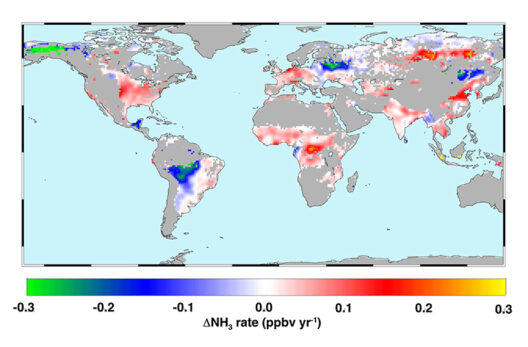What is the climate like in Tennessee? For those who have ventured into this picturesque state, it becomes an intriguing topic of exploration, particularly as the seasons shift, each offering a unique ambiance and charm. With its distinct four seasons, Tennessee showcases the splendor of nature while also presenting a plethora of challenges linked to climate variability.
Located in the southeastern region of the United States, Tennessee’s climate can be categorized as humid subtropical. This classification is characterized by hot summers, mild winters, and considerable rainfall spread throughout the year. The state possesses a rich tapestry of landscapes, from the Great Smoky Mountains to the Mississippi River, each influencing local weather patterns uniquely.
As the seasons change, Tennessee embodies a dramatic transformation, each one presenting its own undeniable Southern charm. Let’s delve deeper into each season to gain a comprehensive understanding of what one might expect throughout the year.
Spring: A Rebirth of Flora and Fauna
Spring in Tennessee unveils a breathtaking display of blossoms and fresh foliage, typically commencing around March and extending through May. This season is often heralded as a time of rebirth, a period when the harshness of winter recedes to allow vibrant life to flourish. Cherry blossoms, dogwoods, and azaleas paint the landscape with pastels, inviting both locals and tourists to revel in nature’s artistry.
Daytime temperatures gradually warm, averaging between 60°F and 80°F (15°C to 27°C). While the scenery is visually captivating, spring also presents a unique challenge: unpredictable weather patterns. Rain showers and thunderstorms can occur, sometimes bringing severe weather, including tornadoes. This raises a pressing question – are residents and visitors adequately prepared for extreme spring weather events? Understanding the risks associated with storm systems is essential for safety during this vibrant season.
Summer: Intense Heat and Humidity
As spring bows out, summer takes the stage from June to August, enveloping Tennessee in sweltering heat and high humidity. Temperatures often soar into the 90s°F (32°C to 37°C), creating a stifling atmosphere. The lush greenery continues to thrive, but the challenges of heat stress on both the environment and human activities become evident.
This season encourages outdoor adventures, from hiking the scenic trails in the Smokies to enjoying the various festivals celebrating Southern culture. However, the escalating temperatures suggest a potential challenge: how will the increasing heat influence the natural ecosystems and local agriculture? Farmers must navigate the difficulties posed by drought and heat, and wildlife often strives to adapt to these changing conditions.
Moreover, summer storms can bring much-needed rain but can also disrupt daily life with their intensity. Residents should remain vigilant and consider adaptation strategies to make the most of their summer experiences while mitigating the impacts of heat.
Autumn: A Kaleidoscope of Colors
With the arrival of autumn, typically from September to November, Tennessee transforms into a canvas of vibrant hues. The foliage ranges from spectacular reds to fiery oranges, making it an ideal time for scenic drives and outdoor exploration. This explosion of color contrasts beautifully against the state’s backdrop of rolling hills and expansive valleys.
Temperatures gradually become more temperate, ranging from 40°F to 70°F (4°C to 21°C), providing an inviting atmosphere for both locals and visitors. Apple picking, harvest festivals, and various outdoor events dominate the cultural scene during this season. However, as the leaves fall, a pressing question emerges: how does the changing climate threaten the delicate ecosystems that produce such breathtaking autumn vistas?
Researchers now focus on understanding the impacts of climate change on these seasonal shifts, which may alter the timing of color changes and the health of trees. As naturalists and enthusiasts alike cherish this time of year, awareness regarding environmental issues becomes paramount for safeguarding Tennessee’s treasured landscapes.
Winter: A Southern Chill
Winter in Tennessee, spanning from December to February, brings a striking contrast to the other seasons. While not known for extreme cold, temperatures often fluctuate between 30°F and 50°F (-1°C to 10°C), and snow is not uncommon in the higher elevations of the Smokies. This season evokes a different kind of charm, with cozy firesides and winter festivals creating memories cherished by families.
However, winter also poses challenges — ice storms and occasional heavy snow can disrupt transportation and daily activities. This raises yet another question: how do community infrastructures respond to the demands of increasingly erratic winter weather patterns? Preparedness is key, not only for individuals but also for the local governments tasked with maintaining safety and accessibility during these events.
Tennessee’s climate phantasmagoria reminds us that while its charm is unmistakable, it is accompanied by the intricacies of transitioning weather patterns. Each season, infused with its unique characteristics, invites us to engage more deeply with our environment. Understanding and addressing these climatic challenges is crucial for preserving the beauty and stability of this enchanting state.
In conclusion, Tennessee’s climate, with its four seasons, offers a fascinating interplay of beauty and challenges. From spring’s blossoms to summer’s heat, autumn’s colors, and winter’s chill, the state embodies the duality of nature. As we navigate these seasonal transformations, it is imperative to remain informed and proactive in addressing the pressing issues posed by climate change, ensuring that future generations can continue to enjoy the Southern charm that Tennessee has to offer.








